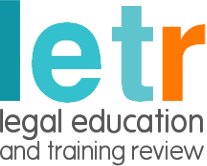Defining competence
4.3 Competence can be seen as:
- An overarching attribute of professionalism: ‘the skilful application of specialised education, training and experience … accompanied by a sense of responsibility and an acceptance of recognised standards’ (Hayes Committee, 1972). In this sense of the term, competence is a desired consequence of an education and training system.
- A practice standard of performance,[1] ie, the benchmark against which a practitioner is judged. Competence in this sense is often regarded as a minimum – a level of performance that is not negligent or otherwise sufficiently poor to merit disciplinary sanction (Cooper, 1991). It is common in this context to distinguish a requirement for initial competence, usually signified by having completed the formal obligations of a qualification system, from any need for higher or continuing competence.
- A statement of (expected or actual) learning attainment. In educational practice these statements are often referred to as learning outcomes.[2]
4.4 McKee and Eraut’s (2012:3) concise definition of competence as the ability ‘to perform the tasks and roles required to the expected standard’ demonstrates that it has two key dimensions: the specification of a range of tasks or capabilities (the competencies or outcomes required) and the expected standard of performance. The linkage between these is critical; without a specified standard, an outcome or competence statement is merely a descriptor of what someone can or should be able to do, there is nothing to denote the quality with which it is done.
4.5 There is considerable variation in the way terms like outcomes, competences, competencies, and standards are used within LSET. Thus, for example, satisfactory completion of pupillage is defined by reference to ‘standards and competencies’ (BSB, 2012c) whilst qualification as a solicitor is determined by reference to a range of ‘practice skills standards’ for the training contract, or task-based ‘outcomes’ for the QLTS (SRA, 2008; 2013). To some extent terminology may be determined by context, so that what is described as a ‘learning outcome’ in the classroom may be identical to an achievement described by an employer or professional body as a ‘competence’ in the workplace. [3]
4.6 For clarity and consistency, this report therefore adopts the terminology set out in Table 4.1
Table 4.1: Terminology for ‘competence’, competencies’ and ‘outcomes’
| Term | Definition |
| Competence (generic term) | An ability to perform the tasks and roles required of a lawyer to (at least) a minimum standard of effectiveness. |
| A ‘competence’ or ‘competency’ (specific term) | A sub-category or component of competence, defined in terms of a task to be performed or attribute to be demonstrated. These may be defined at a comparatively high level of abstraction (see tables 4.2 and 4.3 below, the ‘broad view’) or with a considerable degree of task-based detail (see, eg, the National Occupational Standards (NOS) for legal services, the ‘narrow view’). |
| A ‘learning outcome’ or ‘outcome’ | The expected result of a learning process defined in terms of scope (what is to be known, understood and/or demonstrated). This will often be attached to an NQF level or other ‘marker’ describing the expected level of performance. |
| A ‘standard’ | A means of assuring or measuring the level of performance in a component of competence. This may involve a statement of measurement against predetermined criteria or by reference to, eg, a collaborative process (such as that used in medical assessment) which determines the characteristics of a ‘good enough’ performance. |
[1] The term ‘practice standard’ is used widely here to incorporate all standards that are set as a matter of law, or as a consequence of practice norms, standards or outcomes, whether legally enforceable or not.
[2] Though there is some unresolved inconsistency in the use of terms. Some writers treat ‘learning outcomes’ and ‘competences’ as effectively synonymous, the former being classroom-focused and the latter workplace- focused. Others treat learning outcomes as a sub-set, specifying what it is that the student will need to know or be able to do in order to demonstrate the desired competence (see, eg, Kennedy, Hyland and Ryan, 2009:12).
[3] See also the list of definitions of learning outcomes taken from a range of sources in Kennedy, Hyland and Ryan (2012:4).

